Short and Kasparov as guinea pigs
In the late 1970s, I abandoned the plan of a university career in favour of becoming a science journalist, producing documentaries for German TV (it is described in this biographical article). After a number of years of great fun, with reports on the pyramids, astrology, super-conducting, and many others, I one day convinced my boss that we should do a piece on computers playing chess. In the documentary, which was broadcast on the second national channel, ZDF, we played IM David Levy against the strongest chess program at the time – it is all described in this ChessBase report. The report was a great success – 95,000 viewers wrote in to get the game score and further information. This led to the rival first channel, ARD, asking me to produce a new documentary on the subject. This I did, as part of a series called "Bilder aus der Wissenschaft". It featured the Computer Chess World Championship in Linz, Australia, which Belle won, as well as the very first experiment in cheating with machine assistance. It was broadcast in late 1980.
To contrast it from the first documentary I decided to do a segment on the difference between the thinking of computers and human masters. We got our footage at the 1980 Hamburg Chess Festival. We had invited a budding chess prodigy to play in the event: the lad was Nigel Short, who had just turned 15 at the time, and was of full IM strength. Nigel stayed in my house, and in preparation for the science documentary, I started doing tests on him.
 A few months earlier I had visited the Dutch scientist Adriaan de Groot, who was the world's leading expert in the cognitive analysis of chess masters. In the 1940s, 50s and 60s he had conducted tests and described his results in a famous book, Het denken van den schaker.
A few months earlier I had visited the Dutch scientist Adriaan de Groot, who was the world's leading expert in the cognitive analysis of chess masters. In the 1940s, 50s and 60s he had conducted tests and described his results in a famous book, Het denken van den schaker.
de Groot, on the right in this picture, helped me to design the experiments we would conduct for the documentary in Hamburg. He was a very interesting person and I am thankful till today for all the things I learned from him. I remember vividly Adriaan telling me how grandmasters, in most cases, think of the move they are going to play in the first seconds of contemplation. After that, they might spend many minutes or even an hour thinking about the tactical and strategic consequences of the move, which they then dutifully execute.
I could confirm much of what Adriaan told me in experiments with Nigel. This took place during the first and the numerous subsequent visits of the IM and then GM in our house. My experiments would proceed as follows: I would set up a position on the dining table and then call Nigel, who was typically strumming a guitar in the living room. In my hand, I had a stopwatch, and when Nigel arrived at the table I would watch his eyes. When they hit the chess position I would start the watch, and when he uttered a first sound I would press "lap". If the remark was "What, you want me to solve this?" the stopwatch would continue, and it was only finally stopped when he said something relevant and conclusive, like: "Okay, hang on, White wins with ...".
Here's an example. I should mention that Nigel was not looking for a strong continuation but for a spectacular move, which was characteristic of most of the positions I showed him. In my notes from the time I discover that he found 22...Rh8 in 12.2 seconds. Many years later Garry Kasparov gave the move a ?!! and wrote:
The question mark is in evaluation of the actual quality of the move — after perfect defence by White, Black would probably lose all his advantage. Two exclamation marks for the brilliancy of this idea. The white queen is temporarily moved to a passive position, the black rook will rush to the second rank and the combination of Q+R+B will start chasing the white king, who was so far a distant observer of the shells crashing around his counterpart. At the same time just one knight on e8 is, for a few precious moments, able to keep his king out of trouble. But the price for all these accomplishments is — a full rook!
You can try playing the position on the diagram above. It will reply to your moves after five seconds of thought. In the game, Max Euwe won after 22...Rh8 23.Qxh8 Rc2 24.Rc1 Rxg2+ 25.Kf1 Qb3 26.Ke1 Qf3 0-1.

I took many positions from one of my favourite books at the time, which I still have. It has many solving times for the chess prodigy. In the above case, Nigel found 20.Qe3-h6! in 3.8 seconds. I often showed him the diagram in the book, with the continuation covered.
All this was quite extraordinary, and I thought, for a while, that Nigel might not be solving but recognizing positions he already knew. However, I could rule that out: the boy was rigorously honest. I determined this by setting up positions I had shown him already, a year or two earlier. His immediate answers, sometimes in less that one second, was: "Wait, didn't you already show me this?"
I need to mention one more thing: as part of our documentary research, I consulted the Department of Psychology at the University of Hamburg. When I described my experiments and results they told me it was cognitively impossible for a human being to identify a chess position with over twenty pieces on the board in less than a second. They started to analyse — me! One of the psychologists was an expert in data recording and he explained that it often occurred that researchers exaggerated their findings out of pure enthusiasm for the subject material. "I am not criticizing you, but it is clear that you are not timing him accurately," he said. So I invited him to come over to my house and test Nigel himself. This he did, bringing a chess savvy psychologist with him, and some obscure positions Nigel could not possibly know. They ran some tests on the lines described above and, after a while, started arguing with Nigel: "You simply cannot have done that!" It was an eye-opener for them.

A blindfolded young Nigel Short
I did other tests with Nigel, for example playing him blindfold against the strongest chess computer at the time. I even attempted to test a pet theory, that very strong players are mainly using their right brain, which specializes in pattern recognition. Of course, this is very difficult to investigate: I covered the left and then the right half of glasses for him to wear (each human eye is linked partially to the left and partially to the right brain). Then I played him against a strong club player, at one minute to five. But he won all his games, with the left or the right side of his eye covered. Clearly, he could beat the opponent blindfold. Later when his friend and second John Nunn would visit with him, I tried to repeat the experiment, but with inconclusive results. Incidentally, both subjects refused to cooperate and allow me to sever their corpus callosum, which would have produced much more convincing data. Sissies! In any case, I would urge cognitive psychologists to study this question — if they have not done so already.
Nigel Short takes us on an electrifying journey through a very rich chess career, which saw him beat no less than twelve world champions. His experience in tournaments and matches all over the world – Short has visited a total of 89 countries – can be seen in the narratives that precede the games which he annotates with humour and instructive insights.
Experiments for the documentary
As mentioned in the Qiyu article we used Nigel and World Championship candidate GM András Adorjan, who was also playing in the Hamburg tournament, for our experiments.
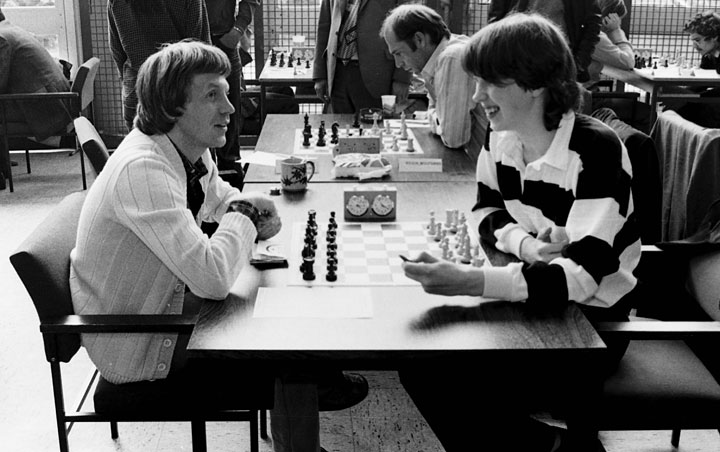
Candidate András Adorjan facing a 15-year-old chess prodigy, in Hamburg, back in 1980
We showed each of these two players a meaningful chess position for five seconds and then asked them to reconstruct it on a second board. Both were very reliable. Andras got his position completely right, with the minor misplacing of a rook on the first rank. He cursed himself for that. Nigel, too, misplaced a bishop, but then told us that he had simply executed the winning move. The producer and head of the BadW series, Albrecht Fölsing, was so impressed that he did another report on computer chess and human thinking, a few years later.
The next part of the experiment was to show a chess amateur — we used our camera director — the position. He was able to reconstruct just five or six pieces. Then we showed all three, Nigel, Andras and the camera director, a perfectly random position, something like the following:
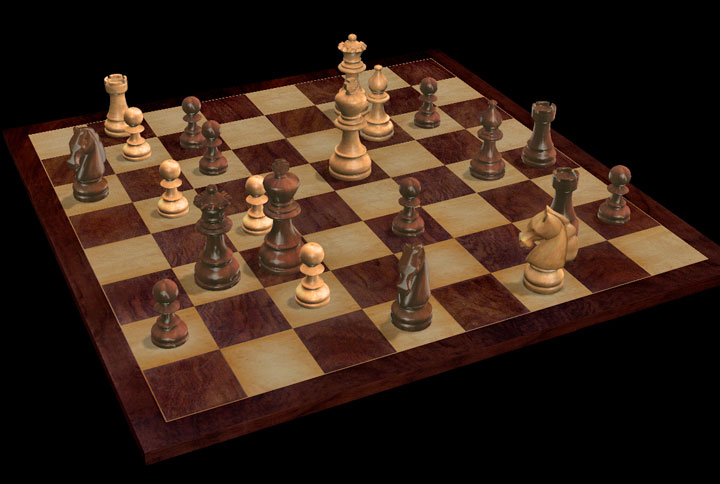
Once again the amateur got five pieces right. But the GM and IM? Andras protested — "This is completely hopeless..." — and managed to put six pieces on the right squares. Nigel, on whom I had tried this at home, got seven right. So basically all three were helpless.
To explain to a lay audience how all this worked, how the GM mind could memorize a (meaningful) position in just five seconds, I told them that these players did not see twenty or twenty-five individual pieces on the chessboard. They saw about five or six "super-pieces", clusters that they could instantly identify.

A familiar "super-piece" or cluster of pieces
I used examples to illustrate this. In the above position, the amateur may scan seven pieces in the bottom right-hand corner of the board, while GMs see one piece — the fianchetto with a pawn still on e2. That is a super-piece that he memorizes at a glance. They find a few similar clusters, and the other pieces are simply "punctuation".
To further illustrate I performed the following experiment for the TV audience: "We are going to show you twenty-five letters of the alphabet, for five seconds, and want you to memorize as many of them as you can." The screen went dark and then the following appeared:
Today the postman delivered a
Then it went blank again. The audience was mystified: that was so easy! Everyone was immediately able to reproduce the twenty-five letters perfectly. Then I showed them the following:
Ngayon ang kartero ay naghahatid
This time they only got a few letters right (it is Filipino). It is similar to the random position for the GM: it was in a language he didn't speak — he could not see any meaningful super-clusters.
After this, I asked the audience to try and find a continuation of the first set of letters. Again they were baffled: "... delivered a letter? ... a package?" That is so easy. Yes, like a GM seeing a tactical position, like Nigel finding Qh6! I think most people got it.
In the next section of the TV report, we did a very interesting experiment. We used special equipment to track the eye movement of a GM (and a chess amateur) when looking at a position:
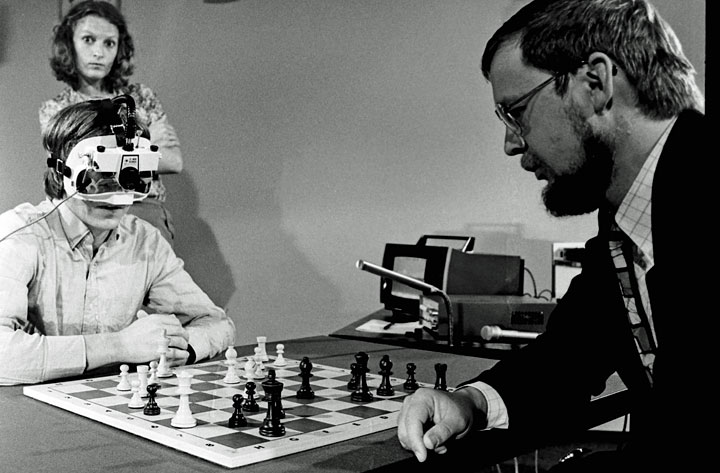
Above you see Andras solving a chess position while we record the movement of his eyes. Helping to conduct the procedure is GM Dr Helmut Pfleger, who has done a number of medical and cognitive experiments with chess players himself.
 The result was quite remarkable: the chess amateur scanned individual pieces, one at a time, and had very little to say. The eyes of the World Championship candidate moved around the board in general, pausing on piece clusters, but also on empty areas. In a few seconds he said: "This is very easy!" and proceeded to execute the combination. Helmut Pfleger moved the black pieces, and the two analysed together. At one stage in the solution, Andras castled queenside, using the a1 rook he had never looked at!
The result was quite remarkable: the chess amateur scanned individual pieces, one at a time, and had very little to say. The eyes of the World Championship candidate moved around the board in general, pausing on piece clusters, but also on empty areas. In a few seconds he said: "This is very easy!" and proceeded to execute the combination. Helmut Pfleger moved the black pieces, and the two analysed together. At one stage in the solution, Andras castled queenside, using the a1 rook he had never looked at!
(Damn, I wish we had the footage of the eye scan experiments. That's Andras, me, Helmut and the BadW chief Albrecht Fölsing in the photo above.)
All this was really fascinating, and I learned a lot from our reconstruction of the de Groot experiments. Nigel was amazing — the speed and reliability of recognizing and solving chess positions were mind-boggling. But a few years later another chess prodigy appeared on the scene, one who was even faster: Garry Kasparov, with whom I performed many experiments.
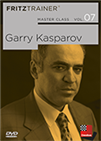 On this DVD a team of experts gets to the bottom of Kasparov's play. In over 8 hours of video running time the authors Rogozenko, Marin, Reeh and Müller cast light on four important aspects of Kasparov's play: opening, strategy, tactics and endgame.
On this DVD a team of experts gets to the bottom of Kasparov's play. In over 8 hours of video running time the authors Rogozenko, Marin, Reeh and Müller cast light on four important aspects of Kasparov's play: opening, strategy, tactics and endgame.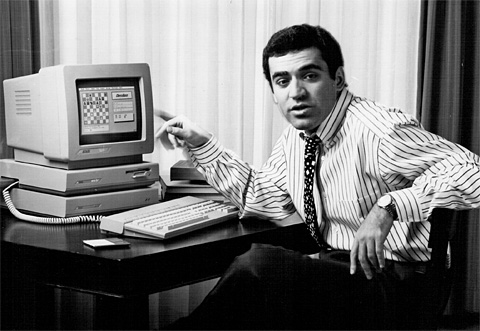 There is one last tale to tell. Around 1986 Garry made a deal with the giant computer company Atari. This picture is from a photo shoot promoting the Atari ST (and incidentally ChessBase 1.0).
There is one last tale to tell. Around 1986 Garry made a deal with the giant computer company Atari. This picture is from a photo shoot promoting the Atari ST (and incidentally ChessBase 1.0).
At one stage Garry was invited to a gala dinner in Frankfurt, with the top Atari managers from all over Europe. There were about 30 people present, sitting around one long table, with Garry in the middle.
After dinner that was a Q&A, with a microphone and translator. Garry was very forthcoming and answered all questions affably.
At some stage, our host, Alwin Stumpf, general manager of Atari Germany, stood up and announced: "Now, ladies and gentlemen, I want to demonstrate something truly incredible. At the entrance to this room, we have a table with ten positions from chess history. Remember, there are tens of thousands of such positions. In front of each is a paper telling us which games they are from — but turned over, so you can't see them. I am now going to ask Mr Kasparov to take a look at the positions and try to identify them. Please, Garry, would you oblige?"
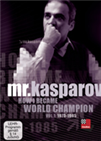 Garry Kasparov's rise to the top was meteoric and at his very first attempt he managed to become World Champion, the youngest of all time. In over six hours of video, he gives a first hand account of crucial events from recent chess history, you can improve your chess understanding and enjoy explanations and comments from a unique and outstanding personality on and off the chess board.
Garry Kasparov's rise to the top was meteoric and at his very first attempt he managed to become World Champion, the youngest of all time. In over six hours of video, he gives a first hand account of crucial events from recent chess history, you can improve your chess understanding and enjoy explanations and comments from a unique and outstanding personality on and off the chess board.Stumpf was reconstructing something he had seen on German TV: on multiple occasions, I had shown Garry historical positions, or historical games replayed on the computer at great speed, and he had to recognize them. It was always spectacular, and the non-chess audience loved it. At the Atari dinner in Frankfurt, however, Garry remained sullenly seated. He took the microphone and said: "I am very honoured that the managers of this great computer company are taking an interest in the working of the mind of a top chess player. But I will ask you to forgive me if I do not go over to the boards..." (Alwin Stumpf looked horrified: we didn't agree to the experiment in advance and he is refusing!!??) "The reason," Kasparov continued, "is that on my way into this hall I was forced to walk past the positions set up at the entrance, and I could not resist glancing at them. So I ask you to allow me to stay seated and try to identify them from here. The first board is a position from the match between Steinitz and Zukertort, played in 1872, where Steinitz executed the marvellous combination..."
Garry did all ten position from his seat at the table, without view of the boards. A helper uncovered the papers and confirmed that he was correct. The 13th World Champion had indeed walked past the positions, and knew what we were up to. So he memorized them — he probably spent the first fifteen minutes of the dinner doing this and preparing for The Moment. When it came he executed it with great virtuosity, to perfection. What a performer! The result: there are currently 30 people telling their grandchildren how, back in 1986, they had encountered pure genius.
Links
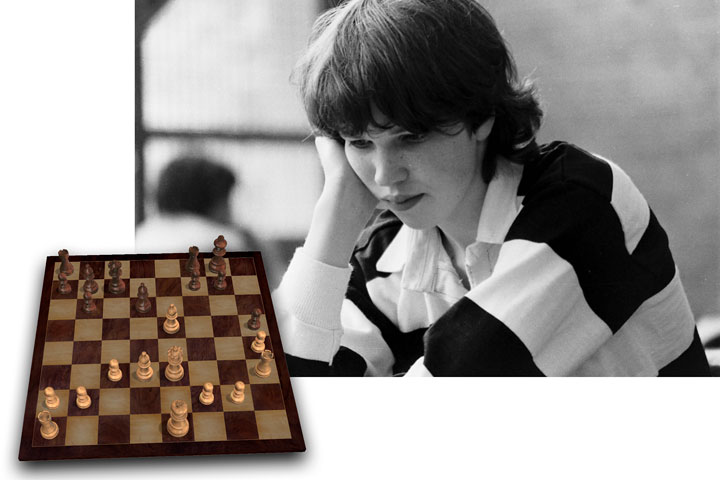

















 A few months earlier I had visited the Dutch scientist Adriaan de Groot, who was the world's leading expert in the cognitive analysis of chess masters. In the 1940s, 50s and 60s he had conducted tests and described his results in a famous book, Het denken van den schaker.
A few months earlier I had visited the Dutch scientist Adriaan de Groot, who was the world's leading expert in the cognitive analysis of chess masters. In the 1940s, 50s and 60s he had conducted tests and described his results in a famous book, Het denken van den schaker.





 The result was quite remarkable: the chess amateur scanned individual pieces, one at a time, and had very little to say. The eyes of the World Championship candidate moved around the board in general, pausing on piece clusters, but also on empty areas. In a few seconds he said: "This is very easy!" and proceeded to execute the combination. Helmut Pfleger moved the black pieces, and the two analysed together. At one stage in the solution, Andras castled queenside, using the a1 rook he had never looked at!
The result was quite remarkable: the chess amateur scanned individual pieces, one at a time, and had very little to say. The eyes of the World Championship candidate moved around the board in general, pausing on piece clusters, but also on empty areas. In a few seconds he said: "This is very easy!" and proceeded to execute the combination. Helmut Pfleger moved the black pieces, and the two analysed together. At one stage in the solution, Andras castled queenside, using the a1 rook he had never looked at! There is one last tale to tell. Around 1986 Garry made a deal with the giant computer company Atari. This picture is from a photo shoot promoting the Atari ST (and incidentally ChessBase 1.0).
There is one last tale to tell. Around 1986 Garry made a deal with the giant computer company Atari. This picture is from a photo shoot promoting the Atari ST (and incidentally ChessBase 1.0).




